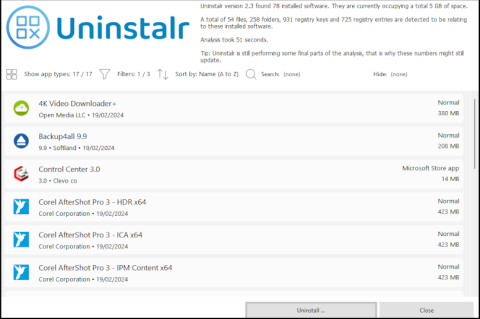Die R-Serie beschäftigt sich mit Telegraphieübertragung.
Telegraph distortion
R.2
Element error rate
R.4
Methods for the separate measurements of the degrees of various types of telegraph distortion
R.5
Observation conditions recommended for routine distortion measurements on international telegraph circuits
R.9
How the laws governing distribution of distortion should be arrived at
R.11
calculation of the degree of distortion of a telegraph circuit in terms of the degrees of distortion of the component links
Voice-frequency telegraphy
R.20
Telegraph modem for subscriber lines
R.21
9600 bit/s modem standardized for use in the telegraph TDM system
R.22
Data over voice 19200 bit/s modem standardized for use on telephone network subscriber lines
R.30
Transmission characteristic for international VFT links
R.31
Standardization of AMVFT systems for a modulation rate of 50 bauds
R.35
Standardization of FMVFT systems for a modulation rate of 50 bauds
R.35 bis
50-baud wideband VFT systems
R.36
Coexistence of 50-baud/120-Hz channels, 100-baud/240-Hz channels, 200-baud/360-Hz or 480-Hz channels on the same voice-frequency telegraph system
R.37
Standardization of FMVFT systems for a modulation rate of 100 bauds
R.38 A
Standardization of FMVFT system for a modulation rate of 200 bauds with channels spaced at 480 Hz
R.38 B
Standardization of FMVFT systems for a modulation rate of 200 bauds with channels spaced at 360 Hz usable on long intercontinental bearer circuits generally used with a 3-kHz spacing
R.39
Voice-frequency telegraphy on radio circuits
Special cases of alternating current telegraphy
R.40
Coexistence in the same cable of telephony and super-telephone telegraphy
R.43
Simultaneous communication by telephone and telegraph on a telephone-type circuit
R.44
6-unit synchronous time-division 2-3-channel multiplex telegraph system for use over FMVFT channels spaced at 120 Hz for connection to standardized teleprinter networks
R.49
Interband telegraphy over open-wire 3-channel carrier systems
Transmission quality
R.50
Tolerable limits for the degree of isochronous distortion of code-independent 50-baud telegraph circuits
R.51
Standardized text for distortion testing of the code-independent elements of a complete circuit
R.51 bis
Standardized text for testing the elements of a complete circuit
R.52
Standardization of international texts for the measurement of the margin of start-stop equipment
R.53
Permissible limits for the degree of distortion on an international 50-baud/120-Hz VFT channel (frequency and amplitude modulation)
R.54
conventional degree of distortion tolerable for standardized start-stop 50-baud systems
R.55
Conventional degree of distortion
R.56
Telegraph distortion limits to be quoted in Recommendations for equipment and transmission plans
R.57
Standard limits of transmission quality for planning code-independent international point-to-point telegraph communications and switched networks using 50-baud start-stop equipment
R.58
Standard limits of transmission quality for the gentex and telex networks
R.58 bis
Limits on signal transfer delay for telegraph, telex and gentex networks
R.59
Interface requirements for 50-baud start-stop telegraph transmission in the maritime mobile satellite service
Correction of signals
R.60
Conditions to be fulfilled by regenerative repeaters for start-stop signals of International Telegraph Alphabet No. 2
R.62
Siting of regenerative repeaters in international telex circuits
Telegraph maintenance
R.70
Designation of international telegraph circuits
R.70 bis
Numbering of international VFT channels
R.71
Organization of the maintenance of international telegraph circuits
R.72
Periodicity of maintenance measurements to be carried out on the channels of international VFT systems
R.73
Maintenance measurements to be carried out on VFT systems
R.74
Choice of type of telegraph distortion-measuring equipment
R.75
Maintenance measurements on code-independent international sections of international telegraph circuits
R.75 bis
Maintenance measurements of character error rate on international sections of international telegraph circuits
R.76
Reserve channels for maintenance measurements on channels of international VFT systems
R.77
Use of bearer circuits for voice-frequency telegraphy
R.78
Pilot channel for AMVFT systems
R.79
Automatic tests of transmission quality on telegraph circuits between switching centres
R.80
Causes of disturbances to signals in VFT channels and their effect on telegraph distortion
R.81
Maximum acceptable limit for the duration of interruption of telegraph channels arising from failure of the normal power supplies
R.82
Appearance of false calling and clearing signals in circuits operated by switched teleprinter services
R.83
Changes of level and interruptions in VFT channels
R.90
Organization for locating and clearing faults in international telegraph switched networks
R.91
General maintenance aspects for the maritime satellite telex service
Time-division multiplexing
R.100
Transmission characteristics of international TDM links
R.101
Code and speed dependent TDM system for anisochronous telegraph and data transmission using bit interleaving
R.102
4800 bit/s code and speed dependent and hybrid TDM systems for anisochronous telegraph and data transmission using bit interleaving
R.103
Code and speed-dependent TDM 600 bit/s system for use in point-to-point or branch-line muldex configurations
R.105
Duplex muldex concentrator, connecting a group of gentex and telex subscribers to a telegraph exchange by assigning virtual channels to time slots of a bit-interleaved TDM system
R.106
Muldex unit for telegraph and low speed data transmission using TDM bit interleaving with an aggregate bit rate higher than 4800 bit/s
R.111
Code and speed independent TDM system for anisochronous telegraph and data transmission
R.112
TDM hybrid system for anisochronous telegraph and data transmission using bit interleaving
R.113
Combined muldex for telegraphy and synchronous data transmission
R.114
Numbering of international TDM channels
R.115
Maintenance loops for TDM-systems
R.116
Maintenance tests to be carried out on international TDM systems
R.117
End-to-end error performance of telegraph, telex and gentex connections involving regenerative equipment
R.118
Performance and availability monitoring in regenerative TDM
Transmission quality above 50 bauds
R.120
Tolerable limits for the degree of isochronous distortion of code-independent telegraph circuits operating at modulation rates of 75, 100 and 200 bauds
R.121
Standard limits of transmission quality for start-stop user classes of service 1 and 2 on anisochronous data networks
R.122
Summary of transmission plans for rates up to 300 bauds
Definitions
R.140
Definitions of essential technical terms in the field of telegraph transmission
Availability and reliability of international telegraph circuits
R.150
Automatic protection switching of dual diversity bearers


